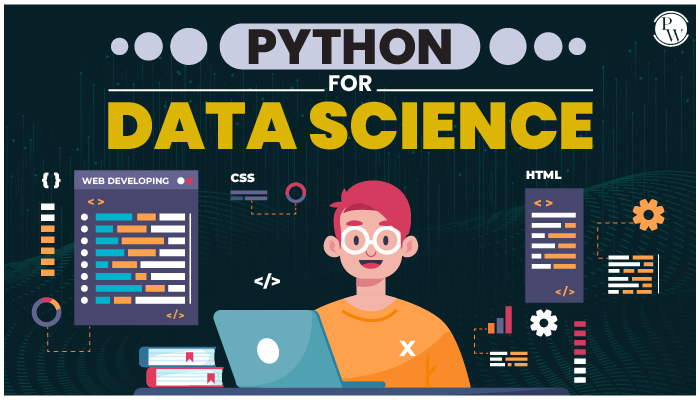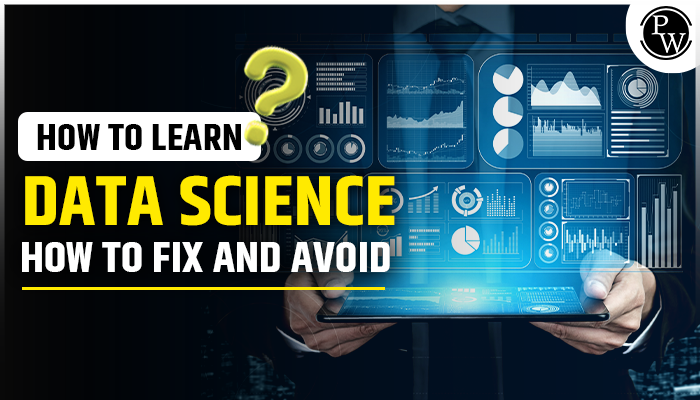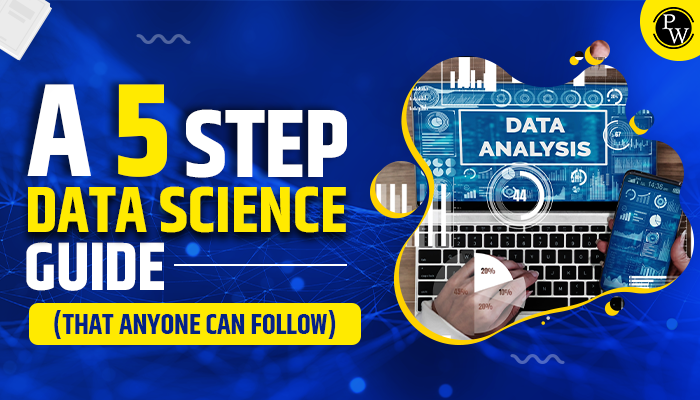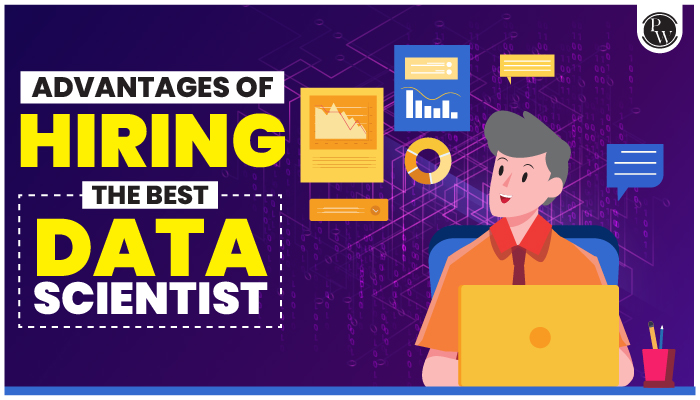Python is a flexible and potent programming language that has become very well-liked among coders, educators, and industry professionals. Guido van Rossum developed Python and released it in 1991. Python is known for its ease of use, readability, and emphasis on elegant code.
One of the main reasons for Python’s popularity is its simple syntax. Python for data science is easy to understand and write because of its clear code and concise, read-first structure. Its simplicity makes it a great choice for beginners to start writing code with this language. It encourages rapid development by allowing programmers to quickly and efficiently turn ideas into code.
Another important benefit of the Data Science Course is its huge library ecosystem. A wide variety of modules with features for tasks like file I/O, networking, threading, and regular expressions are available in the Python Standard Library. Thanks to Python’s package system, pip, developers may also install and use third-party libraries for specialized purposes. Popular libraries like NumPy, Pandas, TensorFlow, Django, and Flask have added to Python’s adaptability and made it easier for programmers to handle challenging jobs.
Several important factors have contributed to Python’s growing popularity in the data science field. First off, Python in data science is accessible to people with different degrees of programming knowledge because of its simple, beginner-friendly syntax. Data scientists focus on solving complicated problems thanks to the simplicity of Python rather than getting bogged down in the nuances of programming.
Python in data science excels because of its extensive ecosystem of libraries built explicitly for machine learning and data analysis. Tools for information transformation, exploratory evaluation, visualization, and numerical modeling may be discovered in libraries like NumPy, Pandas, Matplotlib, Seaborn, Scikit-Learn, and many others. These libraries allow statistics scientists to pre-boost up, easy and data is converted into hidden insights that the commercial enterprise may use.
Recommended Course
- Decode DSA with C++
- Full Stack Data Science Pro Course
- Java For Cloud Course
- Full Stack Web Development Course
- Data Analytics Course
Python For Data Science libraries that are essential for data science
Introduction to NumPy: Using Python for numerical computation
Python for data science contains the foundation and many other scientific computing libraries, making it essential for anyone working with data analysis, manipulation, and statistical applications. NumPy, short for Numerical Python, is a key library in the Python ecosystem that provides powerful tools for numerical computation.
At its core, NumPy comes with ndarray (n-dimensional array) objects, which are powerful data structures for storing and efficiently manipulating homogeneous data. Unlike Python’s built-in lists, NumPy’s arrays are memory-efficient and provide fast computing speed and convenience.
NumPy’s library is famous for functions and mathematical functions as its core features. Numerous arithmetic operations and trigonometric, logarithmic, exponential, and other arithmetic functions are available in NumPy. Without the need for an explicit loop, this function may be applied immediately to the full array, improving element-wise calculation.
This functionality enables efficient data preprocessing and extraction, which is an important step in data analysis and modeling tasks. NumPy also provides flexible array manipulation capabilities, allowing users to resize, slice, and index arrays to extract specific elements or subsets of data.
The NumPy extension feature facilitates collaboration between systems of different shapes and sizes. Propagation keeps the dimensions of arrays accurate, eliminating the need for explicit loops or tedious manual programming. This feature greatly increases the flexibility and simplicity of element-wise performance on arrays.
Data Manipulation and Analysis with Pandas
In the context of Python for data science, Pandas is a very nice open-source library designed specifically for transforming and analyzing data. Data Structures and the data tools and functions provided by Python for data science are very easy, quick, and user-friendly. Pandas offers robust and scalable frameworks like Django, Flask, Numpy, and Pandas that simplify your data manipulation activities, regardless of whether you are working with tabular data, time-series data, or other structured or unstructured data sources.
A data frame, a two-dimensional labeled data structure similar to a table or spreadsheet, is the primary data structure in pandas. DataFrames give you the ability to organize and manipulate data in rows and columns into tables that are easy to read and use. A robust data mill is what a data mill is as a powerful data storage device, giving you greater ability to index, select, filter, and manipulate your data.
One of the main advantages of the panda is its ability to deal with missing information efficiently. It provides methods for identifying, filtering, and filling in missing items, ensuring that your data remains clean and accurate. Pandas also provides powerful tools for data matching and integration, enabling you to combine multiple data sets and restructure data structures and pivot tables for easy analysis.
Pandas incorporate functionality and techniques for data analysis and advanced analytics. It supports a wide range of applications, such as statistical computation, data collection, clustering, and time series analysis. Pandas, you can easily calculate descriptive statistics, apply mathematical functions, aggregate data, and create insightful summaries of your data. Pandas seamlessly integrate with other libraries in the Python ecosystem, making it an essential tool for data science workflow.
Data visualization using Matplotlib
Data analysis and communication both need data visualization. It makes complex information more approachable and useful, making patterns, trends, and correlations among data sets more understandable. For building interactive, animated, 3D visualizations in Python for data science, Matplotlib is an incredibly flexible and useful package.
Several charting choices are available, ranging from straightforward line plots and scatter plots to bar graphs, histograms, heatmaps, and more. You have precise control over all aspects of your charting using Matplotlib, including the colors, labels, titles, outlines, size, and legends. This versatility enables you to produce visuals that are tailored to
The pyplot module of Matplotlib offers a simple interface for designing and modifying graphs. With only a few lines of code, you may design basic plots or use subplots to construct elaborate multi-panel figures. Matplotlib provides a variety of output formats, including static pictures for reports and presentations and interactive charts for Jupyter notebooks.
Data visualization using Seaborn
On the other hand, Seaborn is a higher-level library built on top of matplotlib. It focuses on creating aesthetically pleasing statistical visualizations with minimal code. Seaborn simplifies the process of creating complex plots by providing a range of built-in plot types, such as violin plots, box plots, pair plots, and heatmaps. These plots are designed to showcase statistical relationships and distributions effectively.
Seaborn also enhances the visual aesthetics of your plots with predefined color palettes, themes, and styles. It offers intuitive functions for customizing plots, such as controlling color saturation, adding annotations, and handling categorical data. Seaborn’s integration with Pandas makes it seamless to work with DataFrame structures and leverage the library’s capabilities for grouping and aggregating data.
Both Matplotlib and Seaborn provide excellent support for plot optimization and fine-tuning. You can adjust various elements such as arrows, grids, legends, and fonts, to create interesting and informative graphics. In addition, this library supports advanced features such as adding more layers, creating animations, and embedding plots in interactive dashboards or web applications.
Matplotlib, Seaborn, and Plotly are the most powerful libraries of Python for data science used for Data Visualizations. Matplotlib provides great flexibility and control over plot creation, making it suitable for plotting a range of visualizations. Built on top of Matplotlib, Seaborn provides superior interactivity and exceptional statistical visualization. By leveraging the power of Matplotlib and Seaborn, data scientists, analysts, and researchers can analyze and communicate their data effectively, gain valuable insights, and make compelling data-driven conclusions.
Exploratory Data Analysis with Python
Exploratory data analysis (EDA) is one of the most important steps in Data Analysis. This includes analyzing the datasets with selecting the key attributes, patterns, and relationships in the data to gain insights and uncover hidden patterns. Python for data science provides powerful tools and libraries to perform EDA efficiently and effectively.
Steps to perform EDA with Python:
- Entering and understanding data
- Descriptive Statistics
- Dealing with the loss of value
- Data cleaning and preprocessing
- Examining relationships between variables
- Key Technologies
- Reduction of dimensions
- Hypothesis testing
- Link to results
Machine Learning with Python
Machine learning is a rapidly growing field where algorithms and models can be developed that can recognize patterns, predictions or decisions without explicit programming Python for data science has emerged as one of the most popular programming languages in machine learning due to it is flexible, versatile and available therefore of powerful libraries and frameworks are very popular in machine learning. It provides rich libraries and frameworks that streamline various stages of the machine learning workflow, from data preprocessing to pattern analysis and manipulation.
Python for data science offers a wide range of modules, functions, and packages for machine learning algorithms. Scikit-learn is one the most popular library that offers cutting-edge capabilities and functions for a range of machine learning algorithms, including regression, classification, clustering, and dimensionality reduction. Furthermore, TensorFlow, Keras, and PyTorch are famous libraries of Python for deep learning and artificial neural networks.
PW Skills Provide Various Platform
Frequently Asked Questions
1. Why is Python so famous for data science?
Python is a simple, easy-to-understand programming language. Due to its large libraries like NumPy, Pandas, and sci-kit-learn, which offer potent tools for data manipulation, data preprocessing, data analysis, and machine learning, it has grown prominently in the field of data science.
- What technological and soft skills are required to become a data scientist?
Technological skills – Python, R, Machine Learning, Basic Deep Learning, Statistics, Mathematics, Data Visualisation skills, Data Manipulation, and Preprocessing. Soft skills include presentation skills, storytelling, and the ability to think critically.
- Which Python data science libraries are the most popular?
NumPy supports improved arithmetic operations and multidimensional arrays. Pandas: Offers applications and data structures for the study and processing of data. Data visualization is made possible by Matplotlib using a variety of plot and chart formats. Scikit-learn: Offers a variety of machine learning tools and frameworks.
- What exactly does a data scientist do?
A data scientist is a specialist who examines vast amounts of data in order to derive important insights and resolve challenging issues. To detect patterns, trends, and correlations in data, they utilize statistical approaches and machine learning algorithms, and they then use what they learn to make defensible business judgments.
- What advantages does Python offer in terms of data analysis and visualization?
Python’s simplicity and libraries are just a few of its numerous data analysis and visualization benefits. Data manipulation and analysis, statistical computations, and the creation of aesthetically attractive plots and charts are all made simple using Python. The availability of libraries like Matplotlib, Seaborn, and Plotly facilitates the construction of educational and interactive graphs.
Recommended Reads
Data Science Interview Questions and Answers
Data Science Internship Programs






